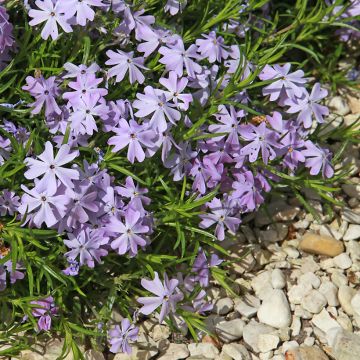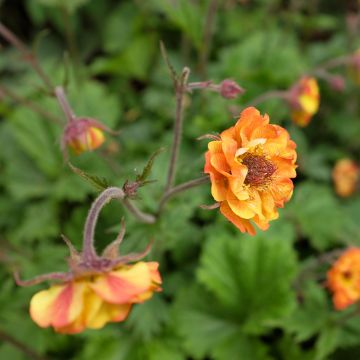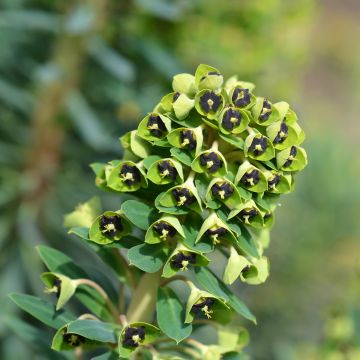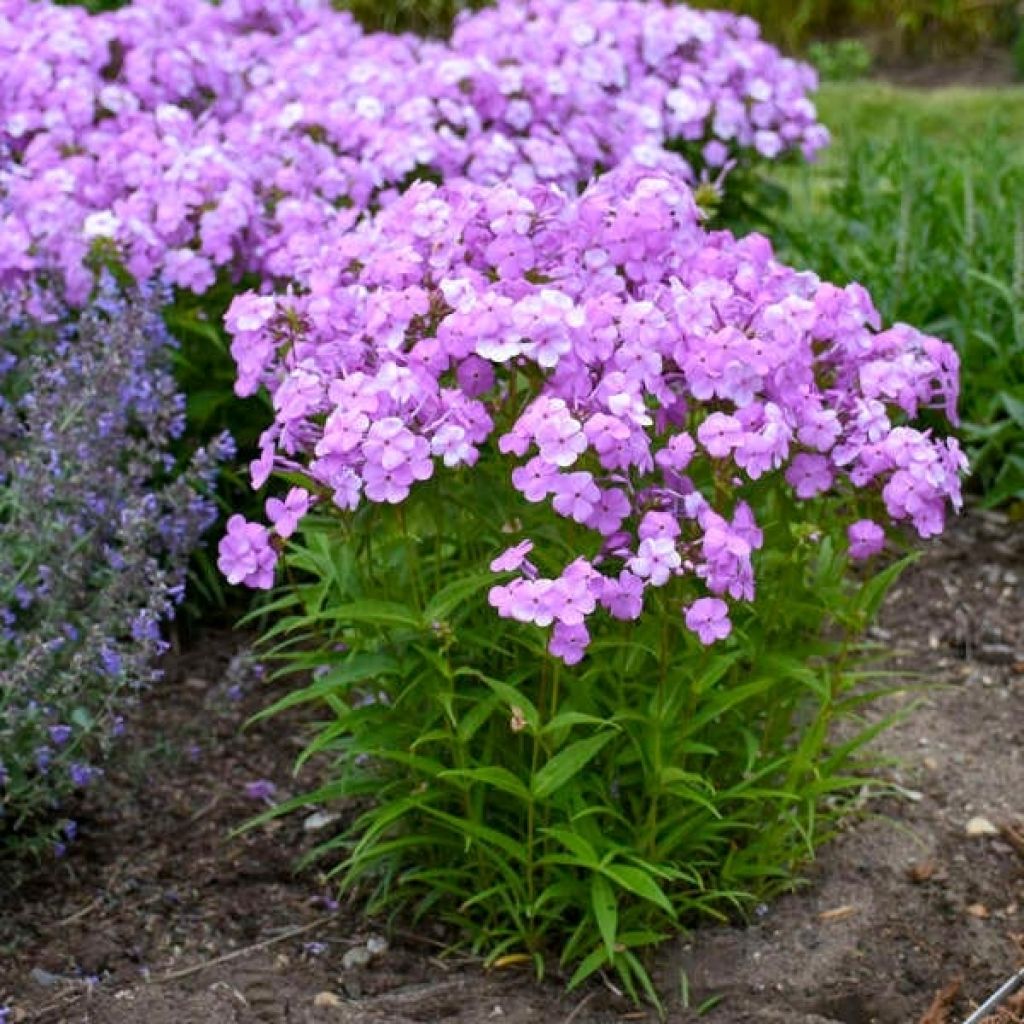

Phlox paniculata Fashionably Early Flamingo
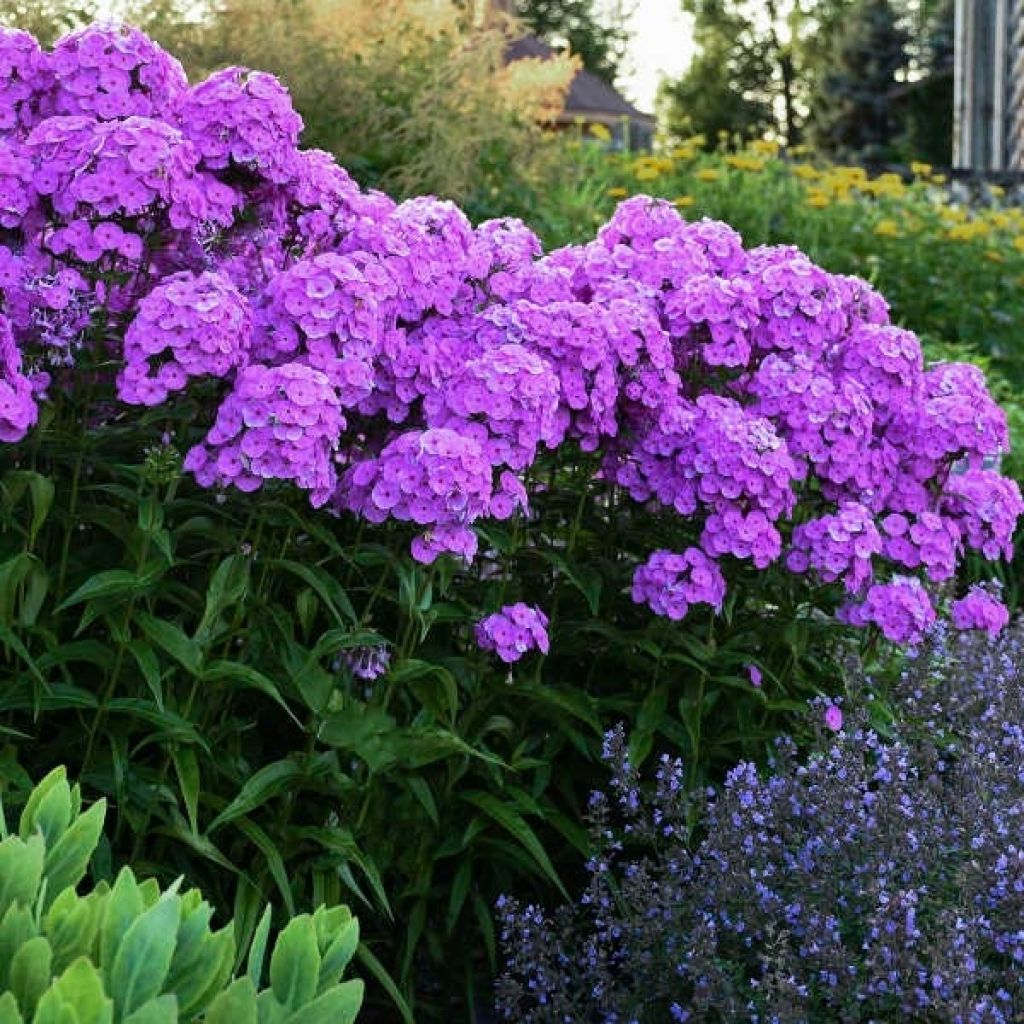

Phlox paniculata Fashionably Early Flamingo


Phlox paniculata Fashionably Early Flamingo
Phlox paniculata Fashionably Early Flamingo
Phlox paniculata Fashionably Early Flamingo
Garden Phlox, Summer Phlox, Fall Phlox, Perennial Phlox
Received well, young plant in good condition planted upon receipt.
Isabelle, 08/05/2020
Special offer!
Receive a €20 voucher for any order over €90 (excluding delivery costs, credit notes, and plastic-free options)!
1- Add your favorite plants to your cart.
2- Once you have reached €90, confirm your order (you can even choose the delivery date!).
3- As soon as your order is shipped, you will receive an email containing your voucher code, valid for 3 months (90 days).
Your voucher is unique and can only be used once, for any order with a minimum value of €20, excluding delivery costs.
Can be combined with other current offers, non-divisible and non-refundable.
Home or relay delivery (depending on size and destination)
Schedule delivery date,
and select date in basket
This plant carries a 12 months recovery warranty
More information
We guarantee the quality of our plants for a full growing cycle, and will replace at our expense any plant that fails to recover under normal climatic and planting conditions.
Would this plant suit my garden?
Set up your Plantfit profile →
Description
The Phlox 'Fashionably Early Flamingo' is part of a new series of hybrids selected for their early and long flowering and their excellent disease resistance. Of medium stature, the 'flamingo' is also distinguished by its slightly suckering temperament, which allows it to form sumptuous clusters of flowers in sunny borders. The abundance of its intensely lavender-pink flowers is such that the plant seems to disappear for almost three months under an abundance of subtly scented flowers, as enjoyable in the garden as in flower arrangements. Colourful, floriferous and graceful, this perennial Phlox has its rightful place in a flower garden, whether cottage, English or romantic style.
The Phlox 'Fashionably Early Flamingo', recently selected by Walter Gardens in Michigan, USA, belongs to the family of Polemoniaceae. This beautiful improvement of the Minnie Pearl variety is a hybrid of Phlox carolina, a very hardy plant with large leaves, native to North Carolina. It prefers non-chalky, fertile and fresh soils.
A perennial with a slightly suckering woody base slowly forms a clump of leafy stems reaching 75 cm (30in) in height and a minimum width of 60 cm (24in). The stems, stiff and sturdy, sometimes require support. They are covered with alternate, simple, broad, thick, leathery, ovate and lanceolate leaves, dark green, and very resistant to fungal diseases that often affect tall phlox, such as powdery mildew and downy mildew. Flowering starts in June (sometimes as early as May) and continues until July if faded flower heads are removed. This variety is a repeat bloomer and often flowers again in early autumn. The small flowers have a tubular corolla of very bright colour, intermediate between pink and lavender, around a magenta centre. They are clustered at the end of the stems in dense and fragrant panicles, gracefully bending the stems. The flowering is attractive to bees and nectar-feeding insects.
The 'Fashionably Early Flamingo' Phlox is a reliable, floriferous and robust plant that is not lacking in charm or character. It can be planted in perennial borders, alongside blue, pink, purple or mauve to violet flowering plants, to create beautiful harmonies. For example, pair it with its sibling 'Early Crystal', white, with pink and mauve asters, goldenrods, tall delphiniums or red peonies, with which it forms an elegant harmony. Panicled Phlox make good companions for bush roses in colour harmony. Given its early, abundant and prolonged flowering, beautiful bouquets can be made for the home without moderation.
Report an error about the product description
Phlox paniculata Fashionably Early Flamingo in pictures


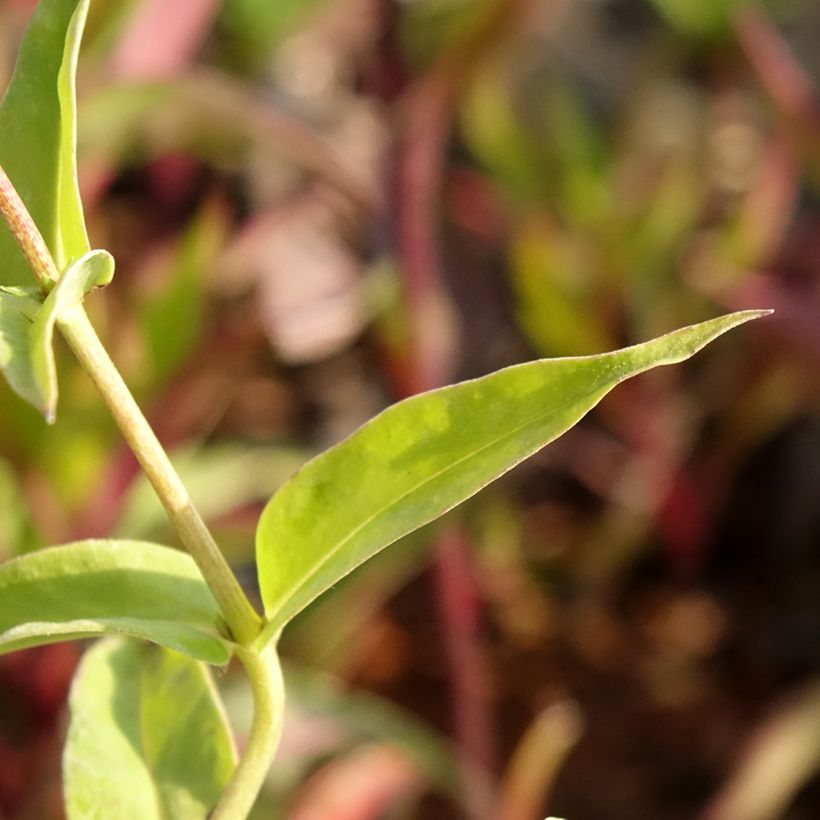

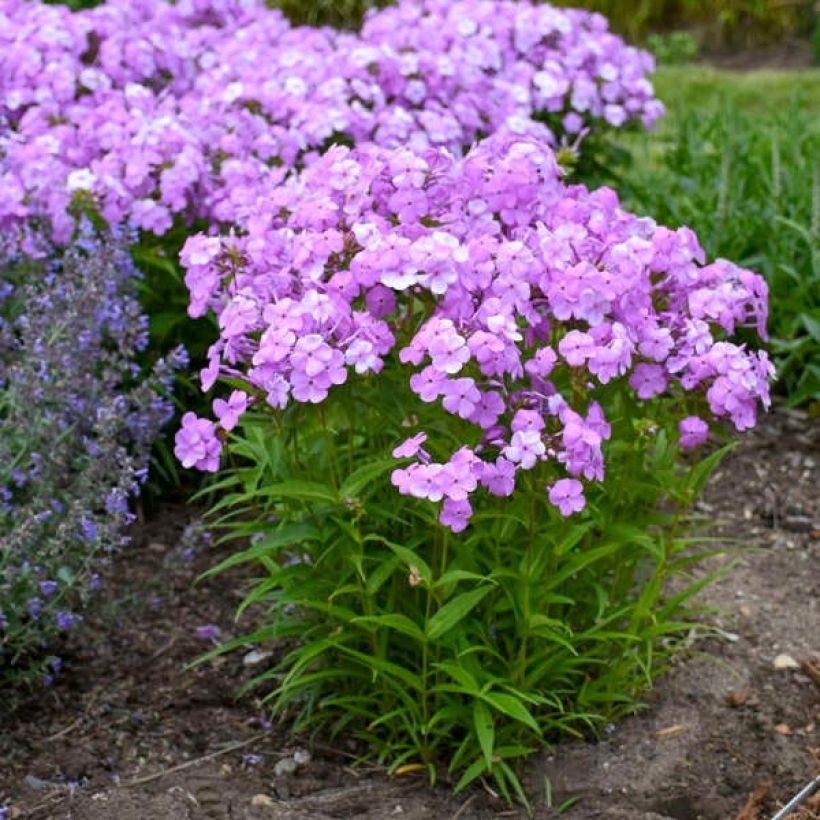

Flowering
Foliage
Plant habit
Botanical data
Phlox
paniculata
Fashionably Early Flamingo
Polemoniaceae
Garden Phlox, Summer Phlox, Fall Phlox, Perennial Phlox
Cultivar or hybrid
Other Phlox
View all →Planting and care
The phlox 'Fashionably Early Flamingo' will prefer cool and rich soil, even clay and slightly damp, but will be content with good garden soil, preferably non-calcareous and not too dry in summer. It needs sunlight to flower well but tolerates partial shade. This tall-stemmed variety sometimes requires staking, but pinching the plant in spring can encourage a more bushy habit, less susceptible to bad weather. Planted in the sun in a climate with hot summers, it will require regular watering and mulching at the base. Pruning faded flower heads promotes the production of new flowers and a second flowering at the end of the season. Protect young plants from slugs, which are fond of their tender shoots.
Planting period
Intended location
Care
-
, onOrder confirmed
Reply from on Promesse de fleurs
Similar products
Haven't found what you were looking for?
Hardiness is the lowest winter temperature a plant can endure without suffering serious damage or even dying. However, hardiness is affected by location (a sheltered area, such as a patio), protection (winter cover) and soil type (hardiness is improved by well-drained soil).

Photo Sharing Terms & Conditions
In order to encourage gardeners to interact and share their experiences, Promesse de fleurs offers various media enabling content to be uploaded onto its Site - in particular via the ‘Photo sharing’ module.
The User agrees to refrain from:
- Posting any content that is illegal, prejudicial, insulting, racist, inciteful to hatred, revisionist, contrary to public decency, that infringes on privacy or on the privacy rights of third parties, in particular the publicity rights of persons and goods, intellectual property rights, or the right to privacy.
- Submitting content on behalf of a third party;
- Impersonate the identity of a third party and/or publish any personal information about a third party;
In general, the User undertakes to refrain from any unethical behaviour.
All Content (in particular text, comments, files, images, photos, videos, creative works, etc.), which may be subject to property or intellectual property rights, image or other private rights, shall remain the property of the User, subject to the limited rights granted by the terms of the licence granted by Promesse de fleurs as stated below. Users are at liberty to publish or not to publish such Content on the Site, notably via the ‘Photo Sharing’ facility, and accept that this Content shall be made public and freely accessible, notably on the Internet.
Users further acknowledge, undertake to have ,and guarantee that they hold all necessary rights and permissions to publish such material on the Site, in particular with regard to the legislation in force pertaining to any privacy, property, intellectual property, image, or contractual rights, or rights of any other nature. By publishing such Content on the Site, Users acknowledge accepting full liability as publishers of the Content within the meaning of the law, and grant Promesse de fleurs, free of charge, an inclusive, worldwide licence for the said Content for the entire duration of its publication, including all reproduction, representation, up/downloading, displaying, performing, transmission, and storage rights.
Users also grant permission for their name to be linked to the Content and accept that this link may not always be made available.
By engaging in posting material, Users consent to their Content becoming automatically accessible on the Internet, in particular on other sites and/or blogs and/or web pages of the Promesse de fleurs site, including in particular social pages and the Promesse de fleurs catalogue.
Users may secure the removal of entrusted content free of charge by issuing a simple request via our contact form.
The flowering period indicated on our website applies to countries and regions located in USDA zone 8 (France, the United Kingdom, Ireland, the Netherlands, etc.)
It will vary according to where you live:
- In zones 9 to 10 (Italy, Spain, Greece, etc.), flowering will occur about 2 to 4 weeks earlier.
- In zones 6 to 7 (Germany, Poland, Slovenia, and lower mountainous regions), flowering will be delayed by 2 to 3 weeks.
- In zone 5 (Central Europe, Scandinavia), blooming will be delayed by 3 to 5 weeks.
In temperate climates, pruning of spring-flowering shrubs (forsythia, spireas, etc.) should be done just after flowering.
Pruning of summer-flowering shrubs (Indian Lilac, Perovskia, etc.) can be done in winter or spring.
In cold regions as well as with frost-sensitive plants, avoid pruning too early when severe frosts may still occur.
The planting period indicated on our website applies to countries and regions located in USDA zone 8 (France, United Kingdom, Ireland, Netherlands).
It will vary according to where you live:
- In Mediterranean zones (Marseille, Madrid, Milan, etc.), autumn and winter are the best planting periods.
- In continental zones (Strasbourg, Munich, Vienna, etc.), delay planting by 2 to 3 weeks in spring and bring it forward by 2 to 4 weeks in autumn.
- In mountainous regions (the Alps, Pyrenees, Carpathians, etc.), it is best to plant in late spring (May-June) or late summer (August-September).
The harvesting period indicated on our website applies to countries and regions in USDA zone 8 (France, England, Ireland, the Netherlands).
In colder areas (Scandinavia, Poland, Austria...) fruit and vegetable harvests are likely to be delayed by 3-4 weeks.
In warmer areas (Italy, Spain, Greece, etc.), harvesting will probably take place earlier, depending on weather conditions.
The sowing periods indicated on our website apply to countries and regions within USDA Zone 8 (France, UK, Ireland, Netherlands).
In colder areas (Scandinavia, Poland, Austria...), delay any outdoor sowing by 3-4 weeks, or sow under glass.
In warmer climes (Italy, Spain, Greece, etc.), bring outdoor sowing forward by a few weeks.

































